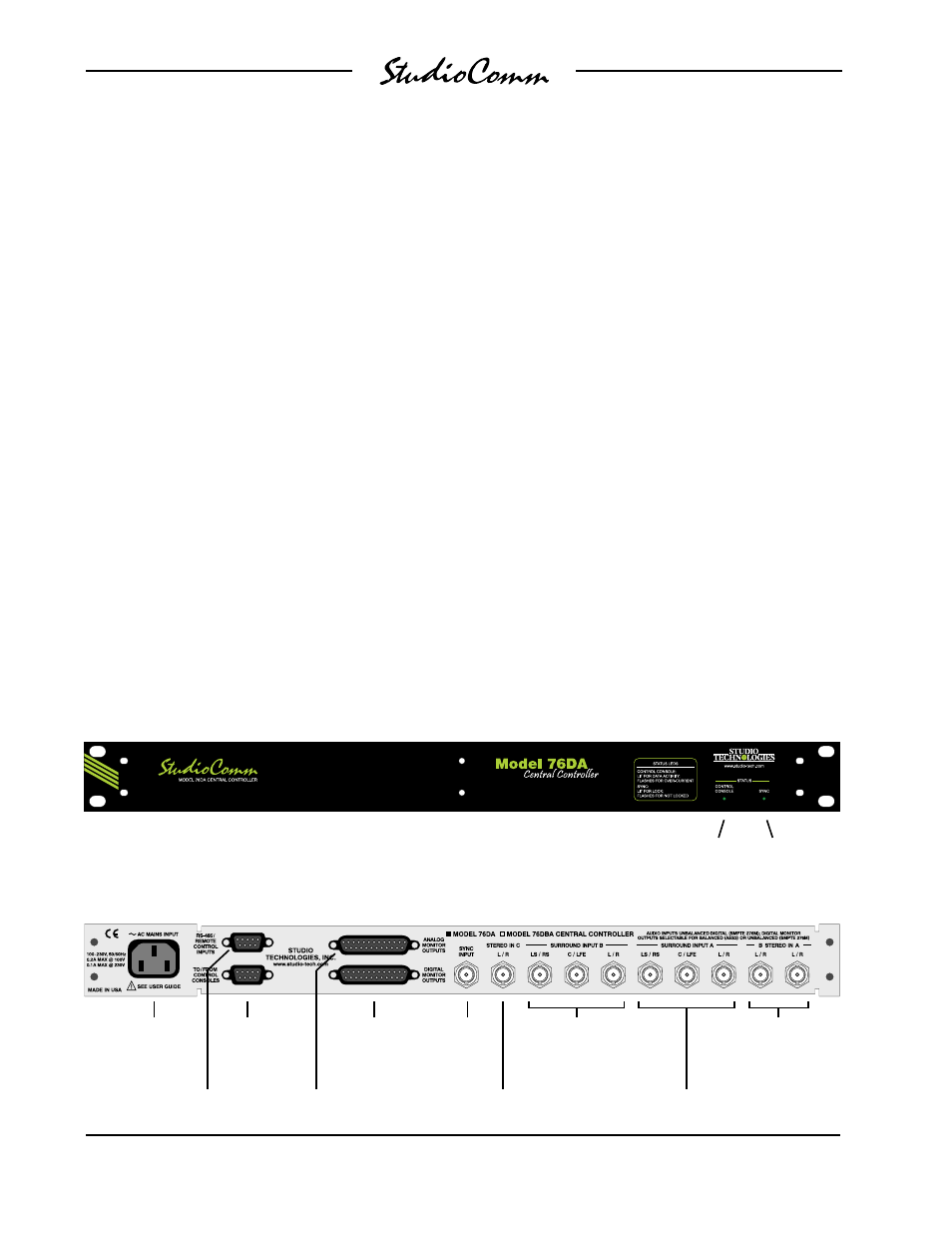Studio Technologies 76DA V.4.00 User Manual
Page 6

Issue 3, July 2012
Model 76DA/77 User Guide
Page 6
Studio Technologies, Inc.
for Surround
Figure 1. Model 76DA Central Controller Front Panel
Figure 2. Model 76DA Central Controller Back Panel
Sync status
LED
Control console
status LED
Sync
Input
Digital
monitor
outputs
To/from
Models 77 &
71 Control
Consoles
AC mains input
Remote control
inputs
Surround Input B
Surround Input A
Stereo Input A and
Stereo Input B
Stereo
Input C
of input delay can be selected to compen-
sate for processing delays in an associated
video path. A number of different signals
can serve as the Model 76DA’s digital audio
timing reference. For synchronization with a
master timing reference a dedicated source
of word clock, DRS (AES11), bi-level video,
or tri-level video can be connected. Alter-
nately, the L/R connection of the actively
selected surround or stereo input source
can serve as the timing reference.
A range of digital and analog surround (5.1)
and stereo digital monitor outputs are pro-
vided. The post-fader surround and stereo
digital and analog monitor outputs are in-
tended for connection to monitor loudspeak-
er systems. The pre-fader surround digital
monitor output can be used with metering
systems that require signals that aren’t
impacted by level control or other monitor-
ing functions. The stereo input C direct
digital monitor output allows an installation
to directly access the SRC capabilities.
For installation flexibility the digital
monitor outputs can be configured for
compatibility with equipment that requires
AES3 (“balanced”) or AES3id (“unbal-
anced”) digital audio signals. When
selected for AES3 compatibility the output
impedance is 110 ohms with a signal level
of 5 volts peak-to-peak (Vpp). For AES3id
operation the impedance is 75 ohms and
the level is 1 Vpp.
A sophisticated bass management func-
tion is integral to the Model 76DA’s design
and can be enabled if desired. It can apply
to both the surround and stereo digital and
analog post-fader monitor output channels.
The overall goal of bass management is
very simple: ensure that the entire audio
bandwidth of all channels can be accurate-
ly monitored. Many loudspeaker systems
have inherent low-frequency limitations,
preventing a true picture of the source ma-
terial from being presented. To overcome
this, the low-frequency energy from the five
Analog
monitor outputs
